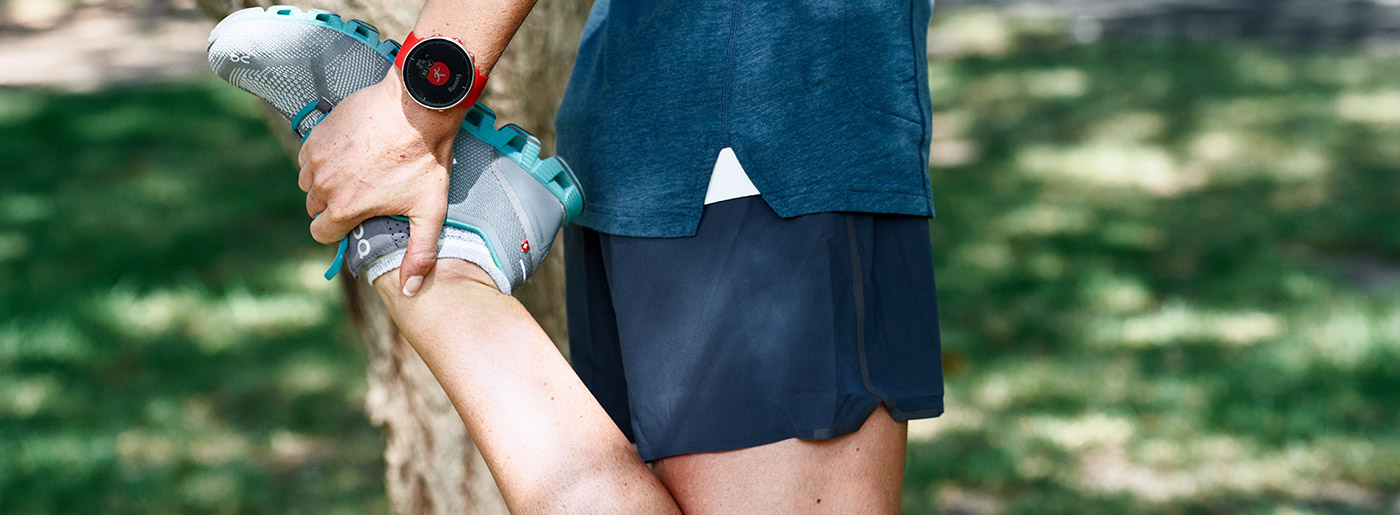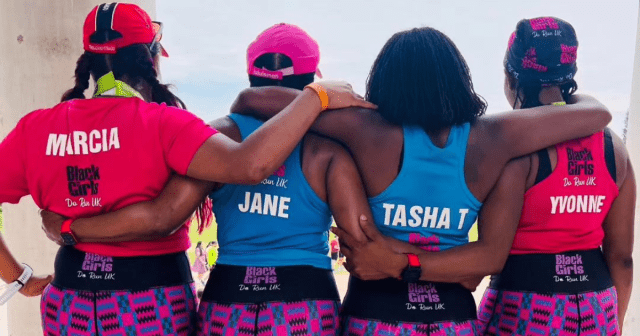It’s no secret that running can have a positive effect on your stress levels, immune system, and overall health, but how do you start running? How should you begin?
How to get into running – and fall in love with the sport – doesn’t it have to be hard. After all, running is a simple sport. You don’t need a gym membership, machines, or much equipment. To start running, all you need is a good pair of running shoes, comfortable clothing, and a running watch to help you track your pace, heart rate, and your progress. To make it even simpler, here’s our guide How to Start Running for Beginners – with some simple steps and advice for sticking to your running routine. Read set… run!
A beginner’s guide to running
The health effects and mental benefits, and the relatively low start-up costs make it one of the most beneficial lifestyle choices you can make. Making running a habit, however, can take some time. That’s why in this article, we’re going to cover the essentials to plan the best running workouts, build a routine, plus a few tricks of the trade to make sure you fall – and stay in love – with running.
TL;DR: You can binge watch our series of videos about how to start running to help you go from your first mile to a marathon. Here’s the first episode.
Get started with running
One of the best things about running is that, unlike in other sports, you don’t need a lot of equipment to get started. But, while it might seem like a pair of running shoes is all that you’ll need, smart choices and a few other items can make your workouts a little more enjoyable and productive.
Here are a few items to consider before you start running:
1. Choose the right running shoes for you
Whether or not you already own an old pair of running shoes or not, if you’re serious about starting a running program, you’ll need to invest in a good pair of running-specific shoes.
Visit a running specialty store where you can run in several different pairs on a treadmill before deciding on a model. Employees may also recommend specific models after watching you run and determining how your foot strikes the ground. The shoe you select should also match your overall fitness level and goals.
2. pick Running-specific Clothing
Sure, you can run in any old pair of shorts and a basic t-shirt.
But the truth is the more you run, the more you’ll appreciate technical, moisture-wicking fabrics made for runners. These clothes are also lightweight, built to keep you cool and dry in warm weather, plus they won’t irritate the skin. You should also consider a hat if you’re running in the sun and a sports bra if you’re a woman.
3. Learn to Listen to YOUR Heart
While training in heart rate zones may be more for intermediate and advanced runners, a heart rate monitor and GPS watch can be a useful tool for beginners who start running, too. In addition to tracking your workout time and mileage, a good heart rate monitor can also give you information, such as calories burned and recommendations on how much time you need in between workouts to recover.
4. find the perfect playlist
When beginners start running, there will be plenty of mental hurdles you’ll need to get past as you increase your mileage. Listening to music, a podcast, or an audiobook while you run can help you relax and make the difficulty of a new activity a little easier to deal with.
Hint: With Music Controls, you can see what’s playing and skip songs directly from your Polar watch.
Related: The Best 21 Running Songs
plan your first running workouts

Having a plan will help you stay consistent and avoid injury as you begin to add running into your weekly routine. Where you’ll run, how often, and how far will all need to be determined beforehand – just remember you can always adjust it depending on how you feel from day to day.
The following basic principles are good rules to abide by as you start to incorporate a running exercise plan into your weekly workouts.
start running easy
The temptation will be to run for as long and far as you can the first time you head out the door. The problem is the more often you do this the more you’ll expose yourself to injury and soreness that could prevent you from running in the days that follow.
Instead, start with a walking routine that includes short amounts of running. Do this even if it feels easy!
Depending on your fitness, your first workouts should look something like this:
- 30 minutes of exercise, alternating three to four minutes of walking with one minute of running.
- Gradually increase your total exercise time and shorten the amount of time you walk in the weeks that follow.
Increase Mileage gradually
Slowly, week by week, up the challenge: Shorten the recovery time so that you run half of the time, walk the other half. Then run for one minute, and recover by walking only until you are ready to run again.
When you start running regularly, it’s not really all that important how fast you run or how long you run for. What matters is that you don’t always run at the same pace. This way, you allow your body to adapt to hard efforts by giving it sufficient recovery – and it also keeps training more interesting!
According to running coach John Honerkamp, you should aim to include your walk/run routine three days per week at first. Make sure you also have two rest days and two days of low-impact cross-training (stationary bike, elliptical, or row machine) as well.
Then, increase your total walking/running mileage by no more than 10 percent each week, while gradually beginning to focus on your running technique, such as cadence.
RUN WELL: THE FOUNDATION OF GOOD TECHNIQUE
Some people may think they’re not made for running, but the truth is everyone can become a runner. In fact, you were probably a runner before you were two years old – running is a natural form of human movement.
As you become comfortable with running longer and faster, you should practice your technique to improve your running form and run more efficiently. With a good running technique, you’ll conserve energy, run faster and longer distances with less effort, and reduce your risk of injury.
To get great running form, consider these tips:
Relax your shoulders and hands, and allow your arms to swing by your sides.
- Draw your shoulders back slightly and stand straight with great posture.
- Keep your eye gaze forward and look ahead.
- Let your foot land right under your hip, midfoot.
- Move forward, not up and down.
Related: How to Achieve Proper Running Form
make a plan – Running program for Beginners

Let’s face it – some days are going to be harder than others.
Following a running training plan gives you a good reason to get up every day and run, helping you to stay consistent and push through those difficult days. Whether you want to shed pounds or run a local race, setting achievable goals can provide the day-to-day motivation you need.
- If the goal is to lose weight, buy a scale and track exactly how many calories you burn during each run. While the pounds may not start to drop instantly, you’ll eventually begin to see small improvements that will help you stay motivated and continue to work toward your goal.
- If your goal is to run a set distance, look into group training runs or a structured running program to help you along. Whether it’s a 5K, 10K, half-marathon, or marathon, signing up for the free Polar Running Program can help you analyze your current training history and use this data to setup a personalized running plan.
Keep in mind the following basic principles when preparing a running plan:
- The primary goal of any good running plan should be to stay injury-free. If you hurt yourself in the first few weeks after you start running, the chances that you stick with running are significantly decreased.
- For this reason, it’s a good idea to start slow and be patient, building your weekly mileage at a rate your body can handle. Don’t increase your mileage and intensity more than 10% week on week – that’s a good rule of thumb.
- While you should expect some soreness, you’ll need to listen to your body and include rest days into your routine to allow your body the time it needs to recover.
Related: How to Build a Running Training Plan
Pace Yourself: start running at the Right Pace
One of the main reasons beginners feel running is a tough, uncomfortable activity is that they usually don’t run at right pace. Oftentimes, they might start running too fast and feel exhausted too early after just a a couple of kilometers. Or they always run at the same middle-of-the-road intensity and soon feel stagnant in their training – and can ultimately lead to quitting running altogether. Proper pacing in running means running at the right intensity.
An effective running program must include different types of workouts and runs with varying distance and duration, and more importantly, different intensity. Variety is what makes your running plan effective – and keep it fun, too!
Some workouts should be short and intense, some long and light, and some can even be long and tough. Easy runs build your aerobic fitness, and your muscular and skeletal strength, whereas speed workouts help you improve your running economy, form, and leg speed.
For each workout and run, you should make sure you’re performing at your optimal pace. Pacing yourself helps you manage how much energy you throughout the duration of the workout and ensures you invest the needed amount of work to help you progress in your career as a runner.
Pacing yourself sounds easy enough, but it can be hard to if you’re going slow enough on easy days and fast enough on hard days. One smart technique to run at the right pace is to determine your heart rate zones. Your heart rate is one of the best indicators of how hard your body is working during a workout.

Find Out your Heart Rate TRaining Zones
Unlike a purely subjective evaluation of intensity and effort, your heart rate is a number you can measure, just like speed and distance. And because it’s a number, it can easily prevent you from running your long runs too fast, at a high heart rate.
A treadmill stress test in a lab will determine your maximum heart rate, but you can simulate a test on your own with a heart-rate monitor, like Polar watches and heart rate sensors. Polar’s Running Performance Test will guide you to gradually increase your speed until you’re running as fast as you can. Your heart rate at the end should be close to your maximum heart rate and maximum effort.
Once you’ve established your estimated maximum heart rate, you can find your heart rate or training zones.
fuel your body: What and When To Eat
Whether your goal is to lose weight or run a 5K, you’ll need to start eating a well-balanced diet to provide your body the energy it needs to support your increased activity level.
While you won’t need to go crazy on sports drinks or energy gels at this stage in your training, your body will need plenty of fruits, vegetables, and lean proteins to recover properly. Try to stay away from processed foods and excess sugar or other foods that can cause huge spikes in your blood sugar levels.
Skipping meals or eating an unbalanced diet will make you feel sluggish and make it even harder to get out the door and run. Here is a basic breakdown of where your calories should come from for each meal:
- Half of your calories should come from vegetables, fruits, rice, and lentils – also known as complex carbohydrates.
- Thirty percent of your calories should come from healthy fats such as avocado, olive oil, and nuts.
- Twenty percent of your calories should be lean proteins such as fish, chicken, and eggs.
- Make sure to drink plenty of water and supplement with a well-balanced multi-vitamin.
Cross-training: Get Strong, Avoid Injury
Believe it or not, you don’t always need to go for a run to become a better a runner. Different sports and activities will help you run more and harder. Cycling, swimming, rowing, or simply walking will help you develop different skills and strengths, and give your joints and muscles the rest they need from the stress caused by running.
Choosing your workouts depends on your goals: for example, do you want to develop your cardio, are you looking to become stronger, or do you feel like you need to add mobility to your body? And remember that working out is not just about becoming better, physically, at a sport – you should be having fun, too! Because if you don’t enjoy what you do, then chances are it will become harder and harder with time to make yourself do it, no matter how motivating your goal is. So whatever exercise form you choose, find one you enjoy!
For the runners wanting to develop their cardiovascular fitness and their endurance to run longer distances, there are plenty of great options.
- Cycling is a fantastic way to build leg strength and endurance without the pounding impact of running. Whether on an exercise bike or riding outdoors, change in resistance – manually, or by climbing or descending a hill – adds nice variation to the routine.
- Cross-country skiing is another outstanding way to enhance your cardio and also to work on your strength and endurance.
- For those with easy access to a pool, swimming is an excellent cardiovascular workout, and it gives you a low-impact total-body workout. Pools are great for water running – or aqua jogging – too. If you want to make water running a bit easier, consider a floatation device.
- Elliptical machines, stair masters and rowing machines are all great for improving cardiovascular fitness as well.
Looking for more guidance? Try these tips from Olympian, Eilish McColgan.
If you liked this post, don’t forget to share so that others can find it, too.
Or give it a thumbs up!
I like this article
Please note that the information provided in the Polar Blog articles cannot replace individual advice from health professionals. Please consult your physician before starting a new fitness program.





